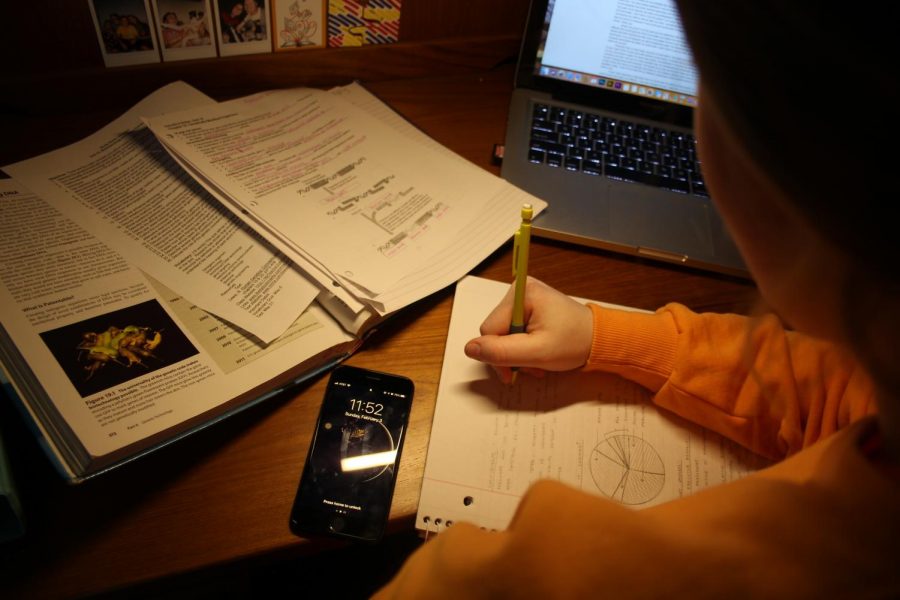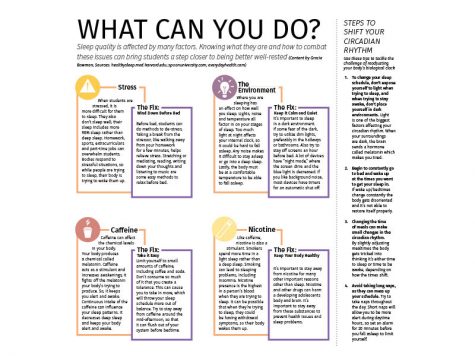Your donation will support the student journalists of Francis Howell North High School. Your contribution will allow us to purchase equipment and cover our annual website hosting costs.
Credit to Phoebe Primeau
Pushing Up School Start Times Must Account for Many Factors, But It Has Many Benefits to Student Achievement
Learning Half Asleep
Published: February 21, 2019
 Within FHSD, the first school bells ring at 7:20 a.m. Currently, between early wake-up times and late bedtimes, many teens get either not enough or a borderline amount of sleep — a survey from the National Sleep Foundation finds this to be the reality 87 percent of high schoolers. To get in those deprived hours of sleep, logically, students should either go to sleep earlier or wake up later.
Within FHSD, the first school bells ring at 7:20 a.m. Currently, between early wake-up times and late bedtimes, many teens get either not enough or a borderline amount of sleep — a survey from the National Sleep Foundation finds this to be the reality 87 percent of high schoolers. To get in those deprived hours of sleep, logically, students should either go to sleep earlier or wake up later.
Due to a shift in circadian rhythms that takes place during adolescence —causing teens to naturally stay up later than children and adults— it’s harder for teens to develop a sleep schedule that allows them to get a full night’s rest while getting up at 6 a.m.
A study done by the University of Washington found an increase in academic performance associated with the additional sleep students got when Seattle high schools delaying start times by 55 minutes. This gradual trend has been taking place across the nation.
“We would absolutely consider it,” FHSD Chief Academic Officer Nathan Hoven said. “It’s been an idea in the back of minds of every school district I’ve ever been aware of for years… It is hard work, but that’s not a reason a district says we’re not going to do it, but knowing that it’s absolutely going to impact your community, you have to be ready to say okay, it’s time to have this conversation that we know is going to be difficult for the community because it is even if it’s a great change, and even if your community totally support this as a great thing, it’s still gonna be hard to do for families, and for everybody involved.”
During school hours, this leads to a lack of focus among students, especially during the first few hours of the day. This can be seen in students as anything from falling asleep during class to struggling to pay attention to notes to simply lacking the energy to work.
“Normally what I try and do is break up [class] into little chunks and kind of move the kids around,” Spanish teacher Valerie Green said. “Normally, they’re only seeing it for like the bell work …after about 15 minutes into the theory, we’ve already switched gears…Sometimes the bell work helps stimulate the brain a little bit, and sometimes just gives them a chance to kind of have a moment before class starts in.”
Of course, implementing a change at the magnitude of moving bell times for schools has numerous factors. For high schools, starting later would mean ending later, which would impact after-school activities. Along with that comes athletic schedules for games and how those coordinate with other schools. There’s also the busing system to think about. Even with their own buses, changing school start times would mean reallocating buses and drivers, and how they coordinate with the length of each route and the population of each school. It’s another complex process that would have to take place if the District start high schools later. For many families, changing school start times would also mean readjusting their morning and after-school schedules.
“If a lot of schools in this general area started doing it started at least all talking to each other about doing it, I think that would help push it,” Hoven said. “…If there’s a big community push that the community says, ‘We want this for our students. And as a community, we’re prepared to work through the difficulties that it would provide,’ I think that would help, you know, anything that takes some of those major impacts and lessens them I think, are things that could help spur this along.”


